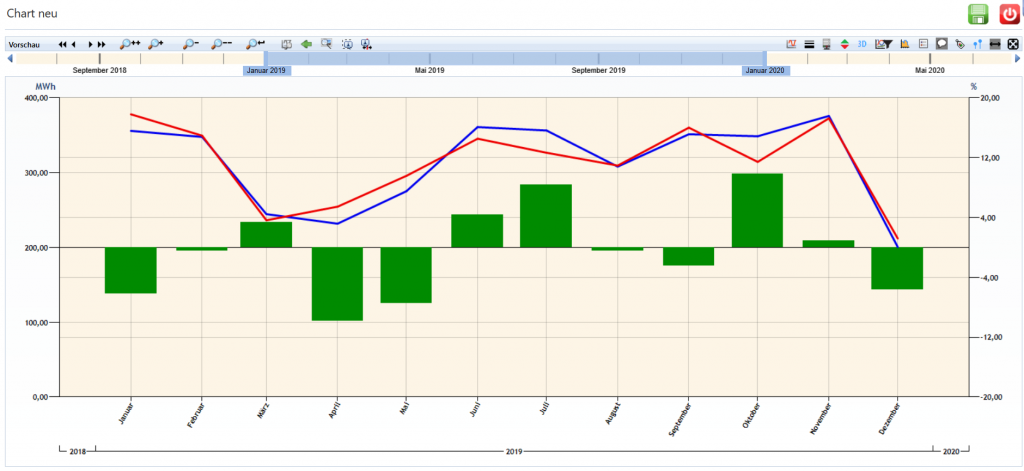Some of our customers already use very successfully methods of regression analysis on the WiriTec C platform to be able to forecast the expected energy demand. Driven by the initiative of one of our customers, we have significantly extended the scope of these functions to use them for in-depth analyses of the actual energy demand.
The approach is the following: The measured energy demand is positioned against a theoretical value to detect eventual discrepancies. This theoretical value is calculated based on regression analytics methodology thus indicating the typical target consumption under consideration of current conditions. Depending on the definition of respective regression rules, critical factors such as architectural conditions, production- or shift/ working hour-related parameters, or even entirely different influential factors can be considered in order to determine the respective target value.
A typical use case for this application is to track the success of energy saving measures or process modifications carried out beforehand, or to check and proof on keeping internal regulations and targets.

Hence, these modifications could also be represented by a simple juxtaposition of previous consumptions, this procedure however is often failure-prone due to the influence of rapidly changing external and internal factors. These factors will be considered in the course of regressions executed, and a formula is created integrating those influential factors into the analyses thus avoiding mistakes and inaccuracies. This method of data clean-up enables customers to generate informative and reliable comparisons between different periods of time.
In addition to a juxtaposition of the theoretical target consumption and the actual consumption to detect any changes, a reverse approach is also possible: Future scenarios can be simulated by adjusting and modifying the individual factors that are used in the regression analysis. In this context, users are able to calculate in how far a reduction or an increase of production by 10 % would affect the expected overall energy demand.
We have bundled all these very useful functions into a separate module on the WiriTec C platform which is available with Release 6.1